Kangkyu Kwon
Intelligent upper-limb exoskeleton using deep learning to predict human intention for sensory-feedback augmentation
Sep 09, 2023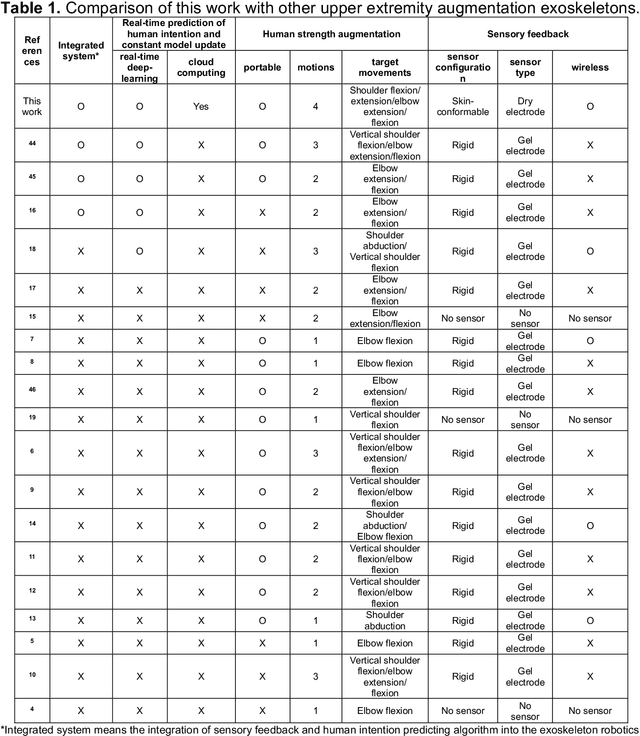
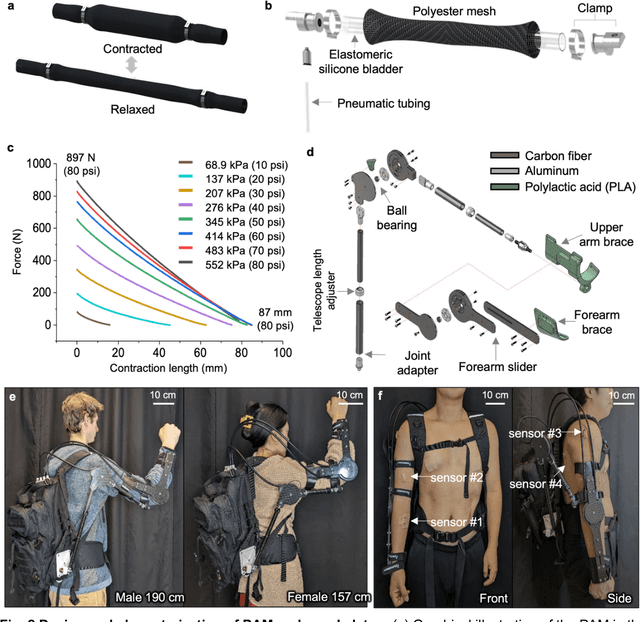
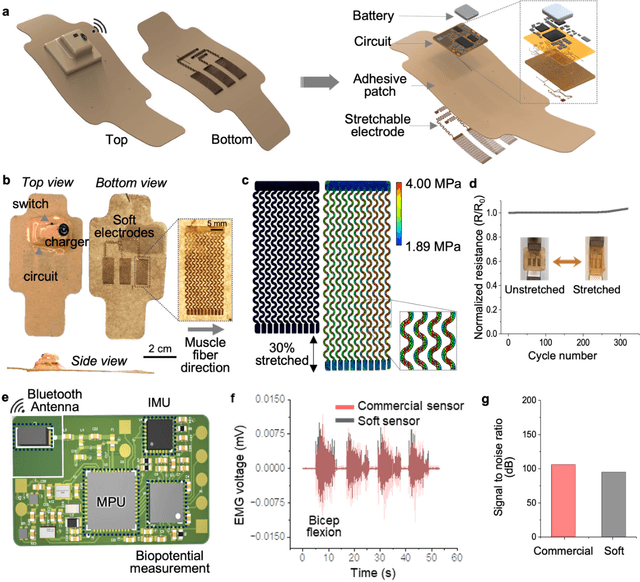
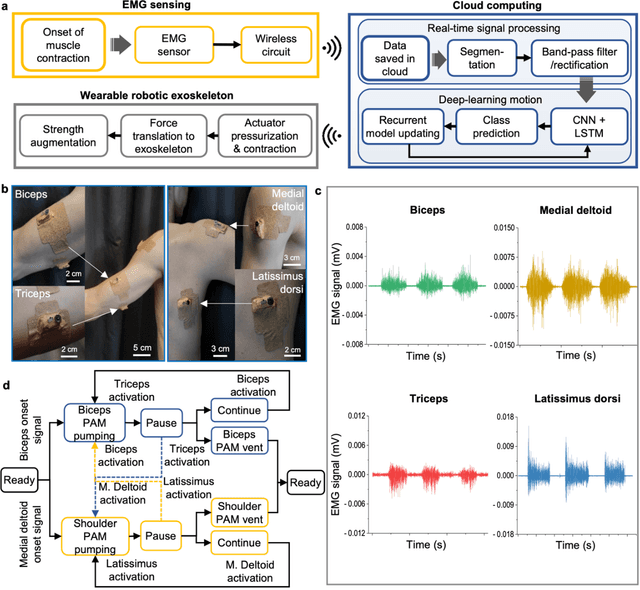
Abstract:The age and stroke-associated decline in musculoskeletal strength degrades the ability to perform daily human tasks using the upper extremities. Although there are a few examples of exoskeletons, they need manual operations due to the absence of sensor feedback and no intention prediction of movements. Here, we introduce an intelligent upper-limb exoskeleton system that uses cloud-based deep learning to predict human intention for strength augmentation. The embedded soft wearable sensors provide sensory feedback by collecting real-time muscle signals, which are simultaneously computed to determine the user's intended movement. The cloud-based deep-learning predicts four upper-limb joint motions with an average accuracy of 96.2% at a 200-250 millisecond response rate, suggesting that the exoskeleton operates just by human intention. In addition, an array of soft pneumatics assists the intended movements by providing 897 newton of force and 78.7 millimeter of displacement at maximum. Collectively, the intent-driven exoskeleton can augment human strength by 5.15 times on average compared to the unassisted exoskeleton. This report demonstrates an exoskeleton robot that augments the upper-limb joint movements by human intention based on a machine-learning cloud computing and sensory feedback.
Novel Smart N95 Filtering Facepiece Respirator with Real-time Adaptive Fit Functionality and Wireless Humidity Monitoring for Enhanced Wearable Comfort
Sep 09, 2023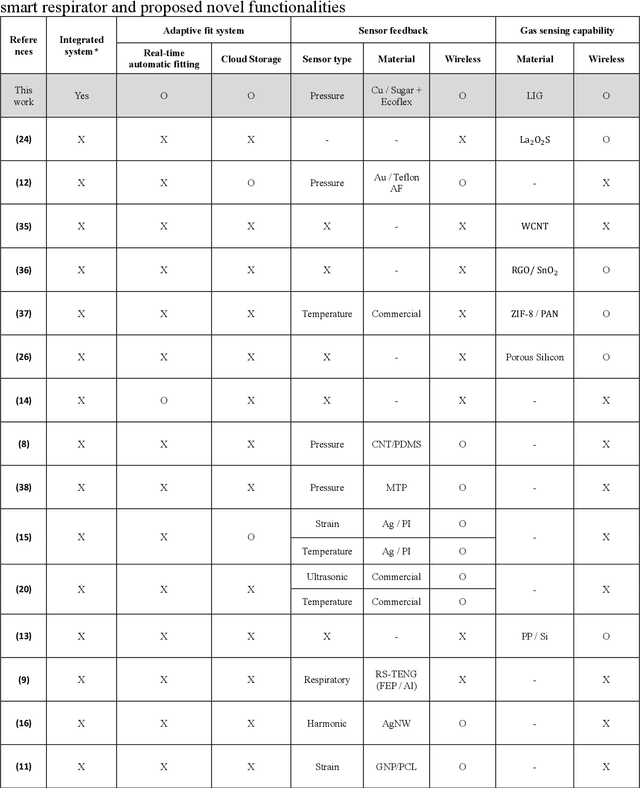
Abstract:The widespread emergence of the COVID-19 pandemic has transformed our lifestyle, and facial respirators have become an essential part of daily life. Nevertheless, the current respirators possess several limitations such as poor respirator fit because they are incapable of covering diverse human facial sizes and shapes, potentially diminishing the effect of wearing respirators. In addition, the current facial respirators do not inform the user of the air quality within the smart facepiece respirator in case of continuous long-term use. Here, we demonstrate the novel smart N-95 filtering facepiece respirator that incorporates the humidity sensor and pressure sensory feedback-enabled self-fit adjusting functionality for the effective performance of the facial respirator to prevent the transmission of airborne pathogens. The laser-induced graphene (LIG) constitutes the humidity sensor, and the pressure sensor array based on the dielectric elastomeric sponge monitors the respirator contact on the face of the user, providing the sensory information for a closed-loop feedback mechanism. As a result of the self-fit adjusting mode along with elastomeric lining, the fit factor is increased by 3.20 and 5 times at average and maximum respectively. We expect that the experimental proof-of-concept of this work will offer viable solutions to the current commercial respirators to address the limitations.
 Add to Chrome
Add to Chrome Add to Firefox
Add to Firefox Add to Edge
Add to Edge